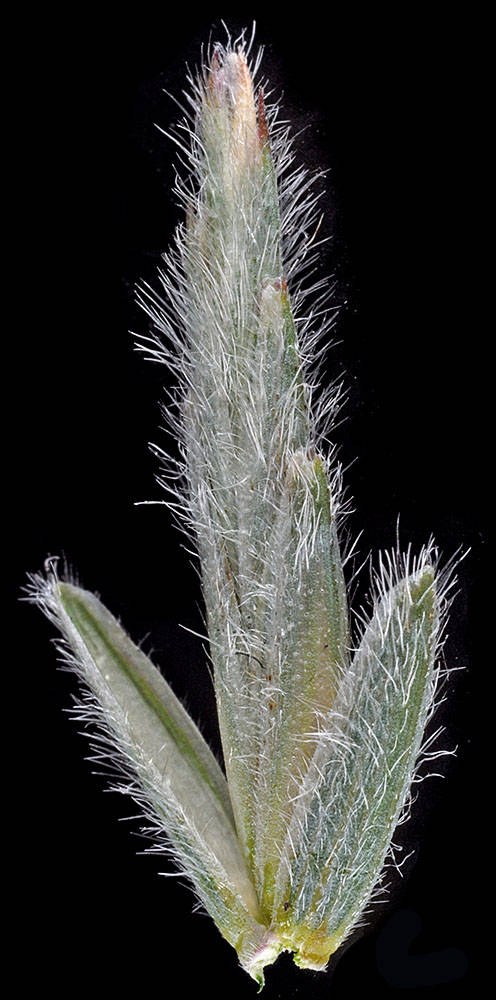Elymus lanceolatus
Elymus lanceolatus ssp. psammophilus
thickspike wheatgrass
sand-dune wheatgrass
erect.
20–95 cm.
sheaths glabrous or pubescent;
blades 1.5–6 mm wide;
outer surfaces usually glabrous;
inner surfaces with appressed hairs.
3.5–26 cm; erect to slightly nodding, 1 spikelet per node but occasionally with 2 at a few nodes;
internodes 3.5–15 mm;
disarticulation above the glumes; beneath each floret.
4–26 cm;
internodes 3.5–13 mm; hairy at least distally.
8–31 mm, 1.5–3 times longer than the internodes, appressed, 3–11 florets, glabrous or hairy;
hairs to 1 mm.
9–31 mm.
5–14 mm, 50–75% the length of the adjacent lemmas, 0.7–1.3 mm wide, lanceolate, glabrous or hairy; smooth or scabrous, 3–5-veined; flat or weakly keeled;
keels straight;
margins narrow, tapering from the base or from beyond mid-length;
tips acute to acuminate, sometimes mucronate or short-awned.
7–12 mm, glabrous to densely long-hairy; all hairs similar, sometimes scabrous;
tips acute to awned;
lemma awns; if present; to 2 mm; straight.
densely hairy;
hairs flexible, usually many longer than 1 mm.
2.5–6 mm.
hairy between the keels;
keels hairy proximally.
Elymus lanceolatus
Elymus lanceolatus ssp. psammophilus
3 subspecies.
Elymus lanceolatus is a strongly rhizomatous wheatgrass that lacks or nearly lacks awns. It is most similar to Pascopyrum smithii, which has more basally concentrated leaves and glumes that taper from near the base and have curved midveins. It is also similar to E. trachycaulus, which is cespitose, has consistently glabrous lemmas, and has glumes 75–100% as long as the lemmas.
Sandy soils in inland dunes and bunchgrass prairie. 0–1000m. Col. WA; north to Yukon, northeast to Ontario. Native.
This rhizomatous wheatgrass of sandy soils is recognized by its densely hairy lemmas.
Barbara Wilson, Richard Brainerd, Nick Otting
Barbara Wilson, Richard Brainerd, Nick Otting
- Local floras:
BC,
OR,
WA
- Local Web sites:
Flora NW,
PNW Herbaria
WildflowerSearch
iNaturalist (observations)
USDA Plants Database
- LBJ Wildflower Center
- SEINet
- Plants of the World Online
- Encyclopedia of Life
- Wikipedia
- Google Image Search
- Local floras:
BC,
OR,
WA
- Local Web sites:
Flora NW,
PNW Herbaria
WildflowerSearch
iNaturalist (observations)
USDA Plants Database
- LBJ Wildflower Center
- SEINet
- Plants of the World Online
- Encyclopedia of Life
- Wikipedia
- Google Image Search




